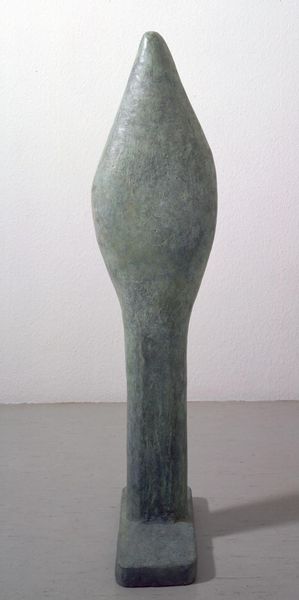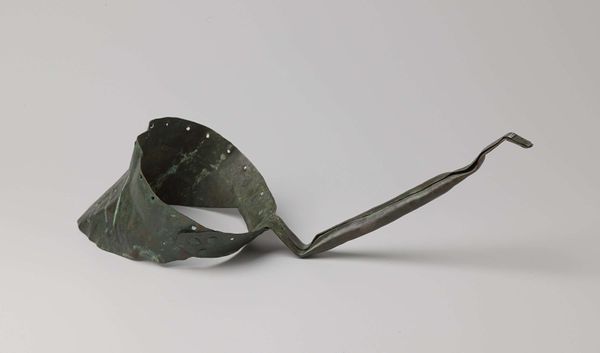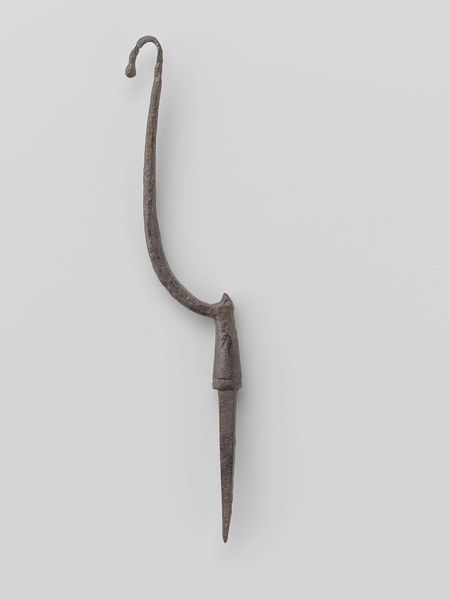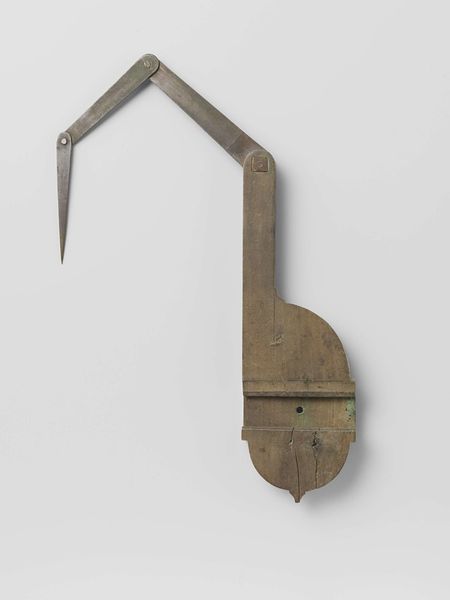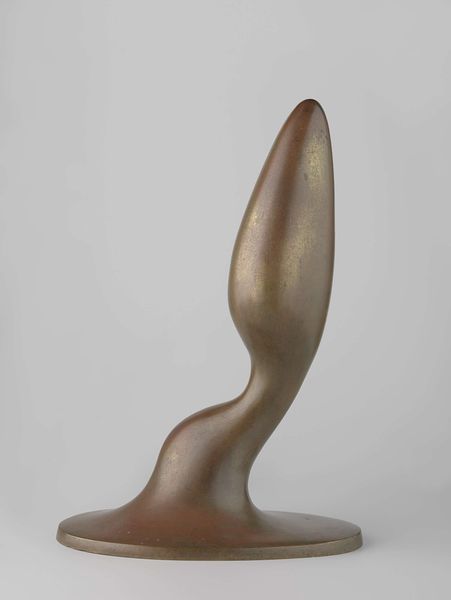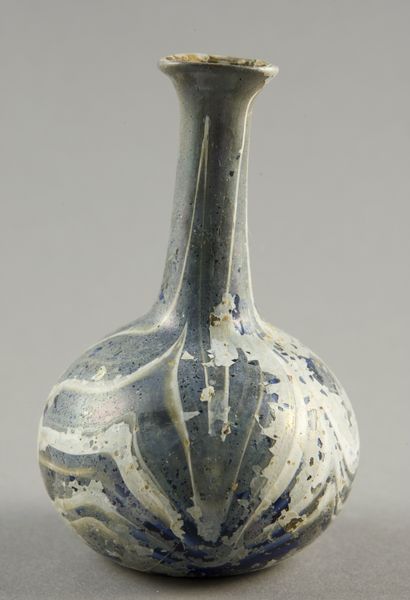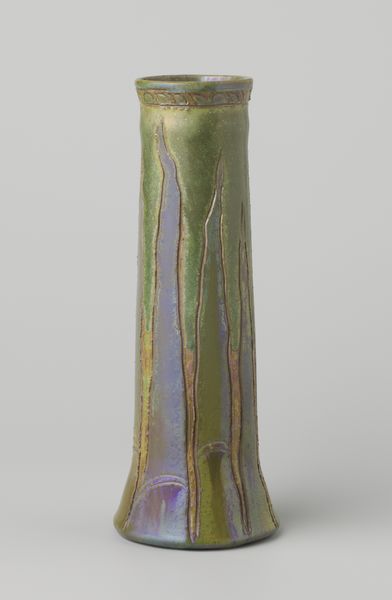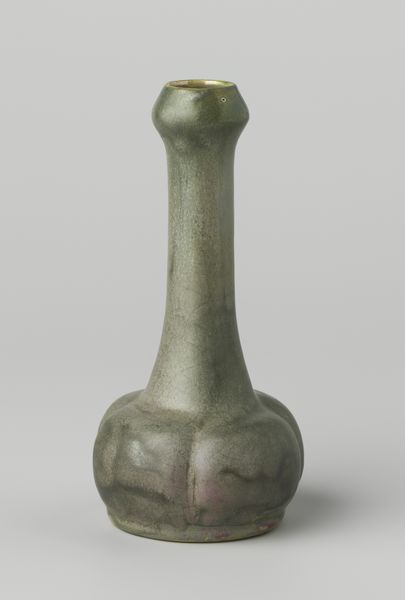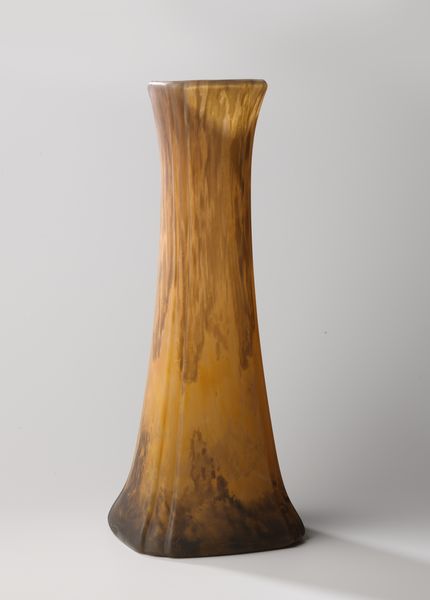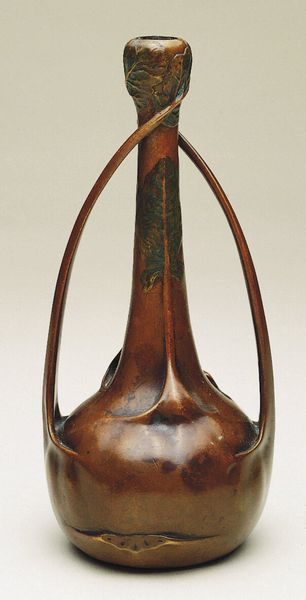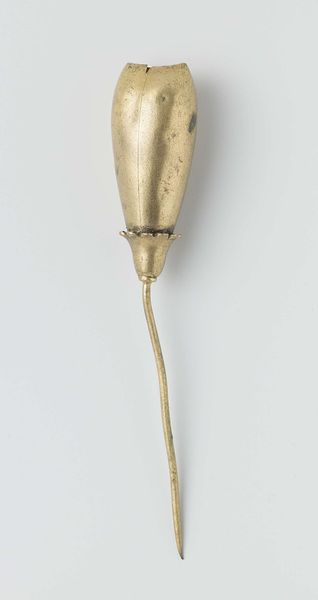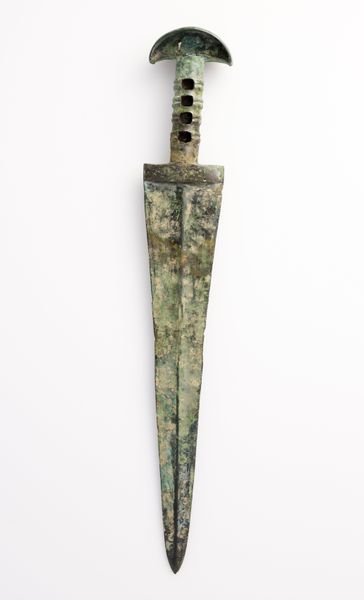
Dimensions: object: 540 x 230 x 175 mm
Copyright: © The Shelagh Cluett Trust | CC-BY-NC-ND 4.0 DEED, Photo: Tate
Curator: What strikes you most about this sculpture? It's an untitled piece by Shelagh Cluett. Editor: It feels strangely organic and industrial at once. Like a futuristic seed pod, maybe, but made of metal. Curator: Cluett's practice often explored themes of growth and decay. Her works engage with the broader societal narratives that shape our understanding of nature and technology. Editor: I see it. There's a vulnerability here. The form is delicate, but the material choice suggests resilience. Curator: Cluett frequently employed unconventional materials. This work makes you consider how institutions have historically classified materials. Editor: It challenges the divide between the natural and the artificial, doesn't it? A provocative object. Curator: Indeed. It leaves us questioning not only its identity, but our own preconceptions. Editor: A testament to Cluett's unique vision.
Comments
Join the conversation
Join millions of artists and users on Artera today and experience the ultimate creative platform.
tate 8 months ago
⋮
This emerald-coloured sculpture from 1985 is based on the stupa forms of Buddhist architecture. For many years, these forms held a strong fascination for the artist. She was particularly interested in the immediacy of their method of creation as well as their transformation of the ordinary into the magical. Made out of sheets of metal, curled into a sharp upside down cone, this work opens out at its base into a bulbous container-like organic shape. A thin ring of gold can be seen around the very centre of the sculpture. This use of gold is a reference to Buddhist religion, whose devotees buy squares of gold leaf to adorn idols. However, these reverential references are in stark contrast to the common material used and its seemingly rough handling. The process of creating such works as this was a lengthy one, requiring the artist to beat the metal repeatedly with various hammers. This action made the material more brittle and liable to break, in effect making it more difficult to handle, and many attempts were discarded. Colour plays a significant role within these works and was determined before any other aspect of the sculpture. It was applied at the very beginning of the work, making it part of the form and surface of the sculpture.
